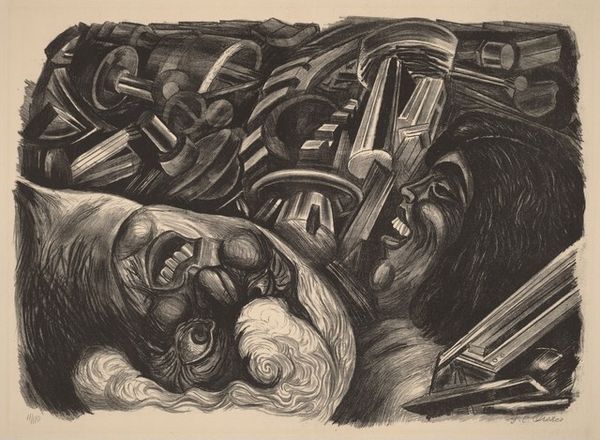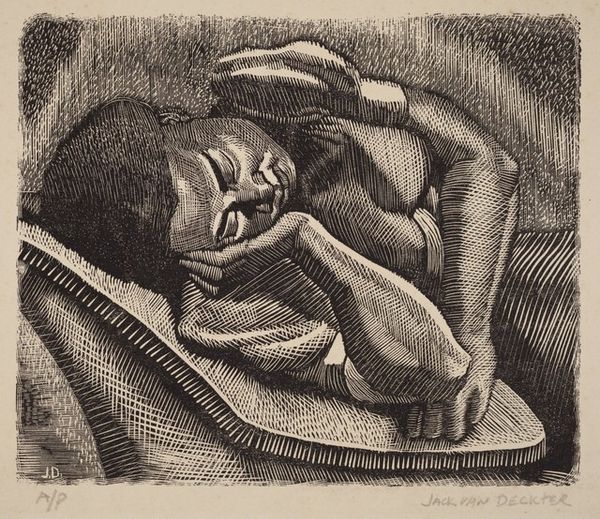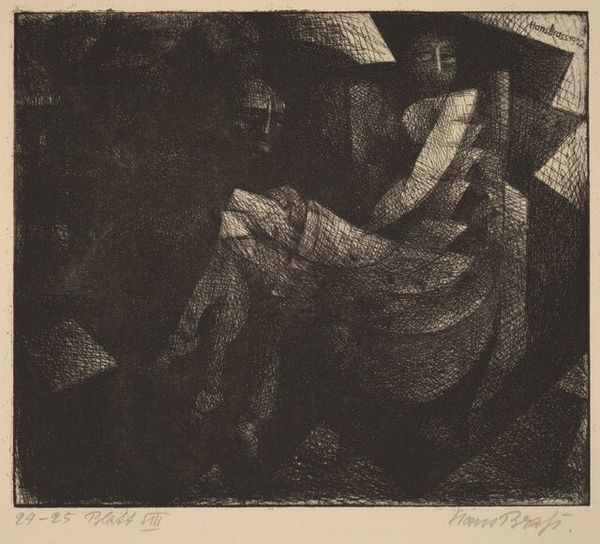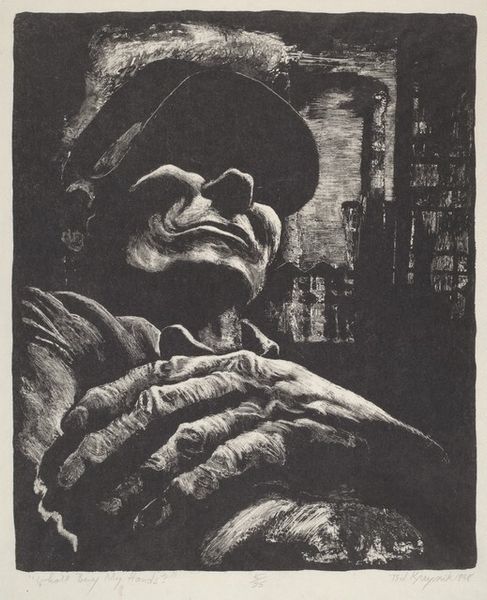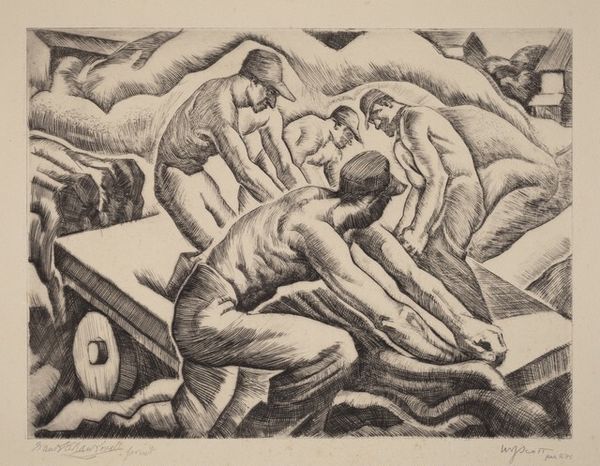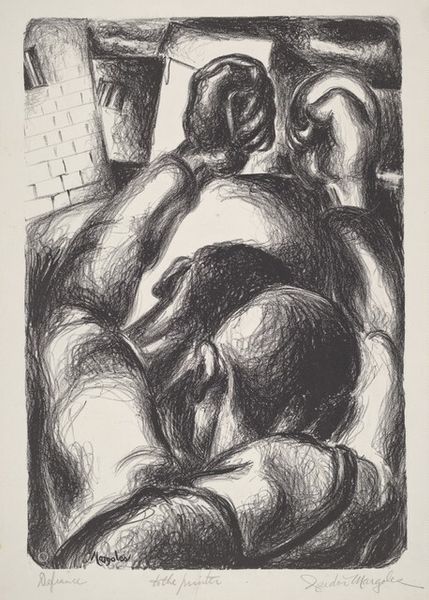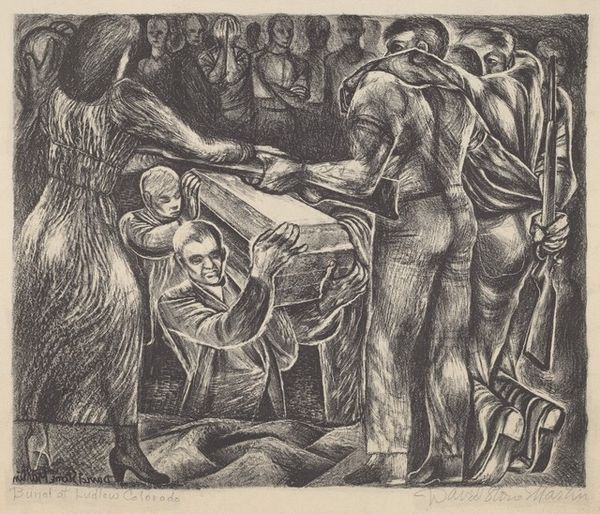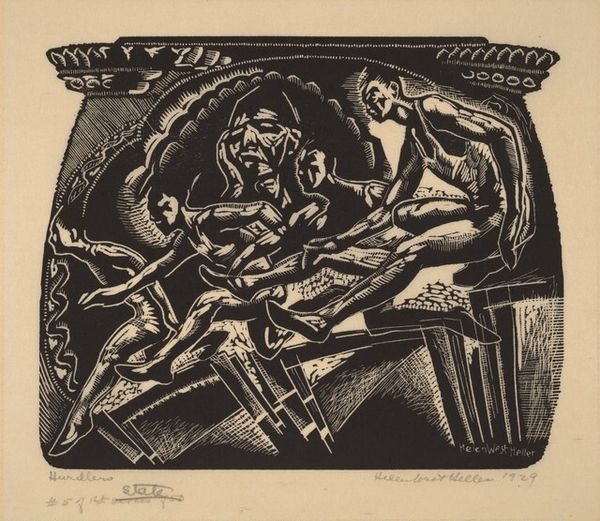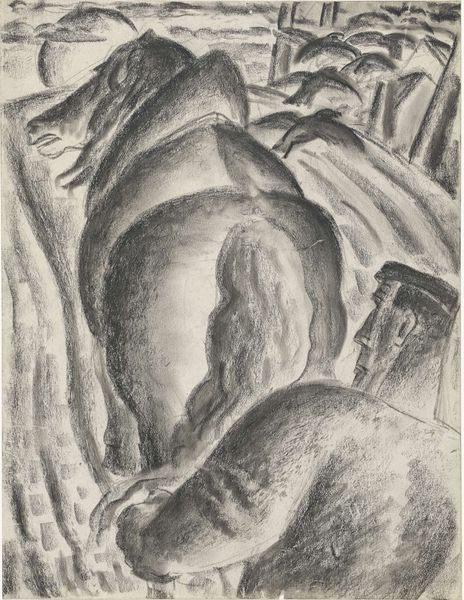
drawing, print, ink, charcoal
#
portrait
#
drawing
# print
#
charcoal drawing
#
ink
#
surrealism
#
portrait drawing
#
charcoal
#
surrealism
Dimensions: image: 275 x 398 mm sheet: 326 x 508 mm
Copyright: National Gallery of Art: CC0 1.0
Editor: So, this is Lorraine M. Burgess's "Antrum Irrigation," a print made using ink and charcoal sometime between 1940 and 1945. It’s intensely surreal, almost like a dream… unsettling and thought-provoking. I’m not quite sure what to make of it, though. How do you interpret this work? Curator: The socio-political context of the 1940s, during and after World War II, significantly shaped artistic expression. Surrealism provided artists like Burgess a vocabulary to explore trauma, the fragmentation of identity, and societal anxieties. The imagery here—a grotesque portrait with hands manipulating strange, organic shapes—suggests a critique of power structures, perhaps medical or social, "irrigating" and therefore controlling the "antrum," a cavity. How might that critique resonate in a period defined by propaganda and political control? Editor: That’s interesting, I hadn’t considered it in light of wartime propaganda. I was so focused on the strangeness of the imagery. The hands almost seem to be violating the figure. Curator: Precisely. The deliberate manipulation of the body politic was a constant theme. Consider the history of medical imagery and its role in defining and controlling bodies, particularly in the context of eugenics movements which were widespread. Could this be a reaction to such manipulation and control? The presence of an eye and partial face implies both a witness to this manipulation and perhaps even complicity. Does that alter your view of the composition? Editor: It does, significantly. I see now how it goes beyond just personal angst to a commentary on a much broader scale. Thank you for contextualizing the imagery. It opens up a whole new dimension for me! Curator: And it’s in those contextual dimensions that a work becomes both deeply personal, and overtly social. I wonder, can art ever truly separate the two?
Comments
No comments
Be the first to comment and join the conversation on the ultimate creative platform.
